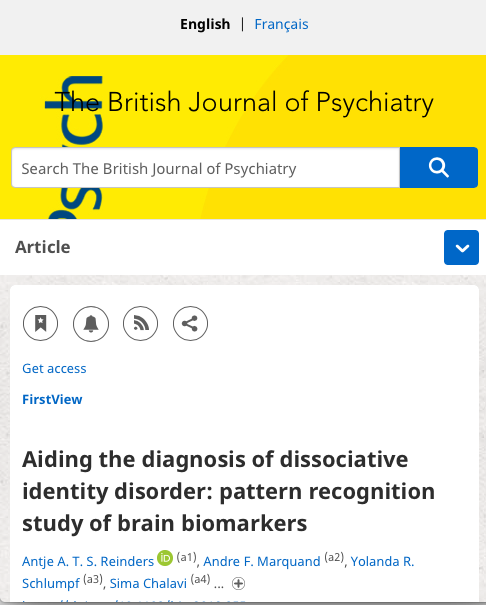
British Journal of Psychiatry article "Aiding the diagnosis of dissociative identity disorder: pattern recognition study of brain biomarkers"
DID Brain Pattern Study doesn’t measure up — December 2018
Many articles this past week have cited a new study out of the Netherlands on computer-aided analysis of women with dissociative identity disorder (DID) vs. women with normal brain scans from MRIs (articles listed below review). The study, published in the British Journal of Psychiatry makes a few bold claims about the potential for using MRI and computer-aided analysis to detect DID, saving people an average of 7 years of mis- or under-diagnosis, while the study’s Limitations section admits that it is far from able to do so without further study.
All the DID study participants were already in therapy and diagnosed, all the DID participants have active PTSD (except 3 in remission), many are on medications, all were women, and no efforts were made to compare the DID brain scans with the brains of people with PTSD or other diagnoses — making it impossible to generalize the results to the public-at-large as a diagnostic factor. These limitations are mentioned in the original paper, but not always emphasized in the articles out in the wild.
At best, what this study has done is stir the pot in reaffirming that people with DID are definitely different from normal people, and confirm that PTSD changes brain structure without affirming whether or not there’s any difference between the changes seen in PTSD and those in DID, a similarity that has been shown in former MRI studies.
We await more research on the topic.
Article covered in:
